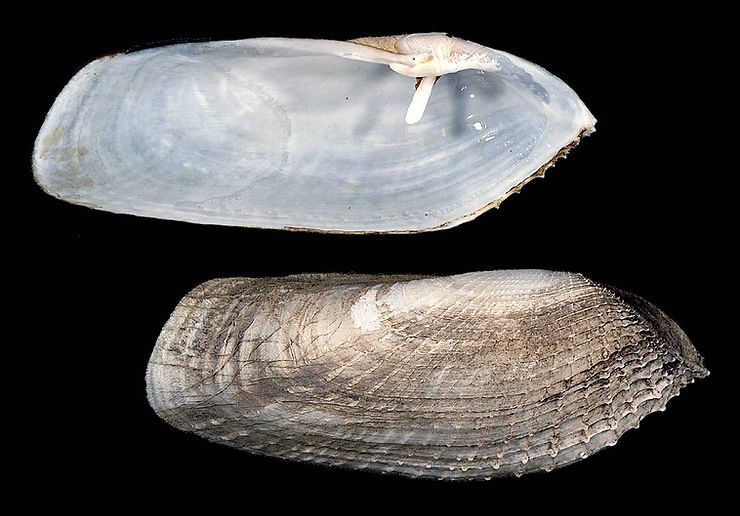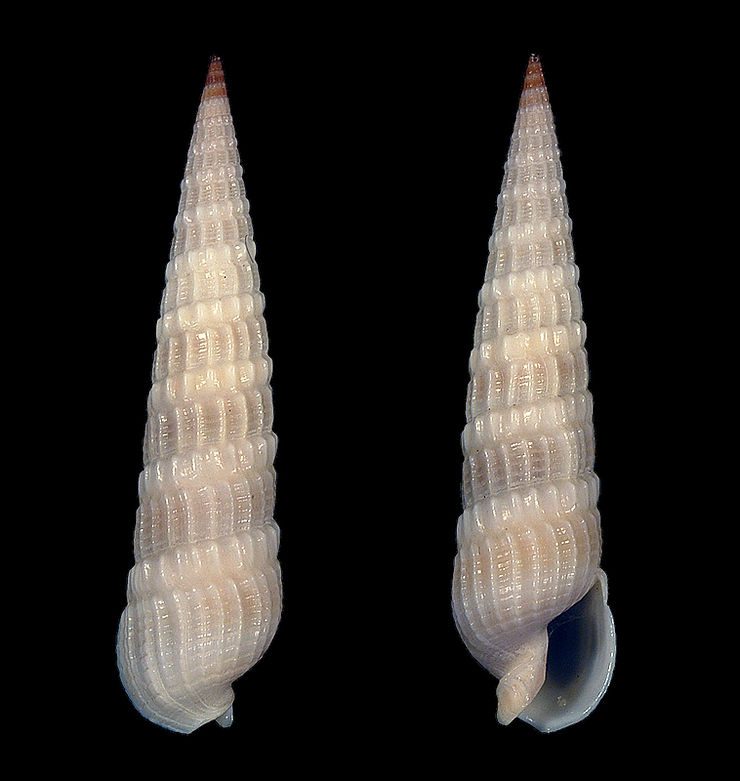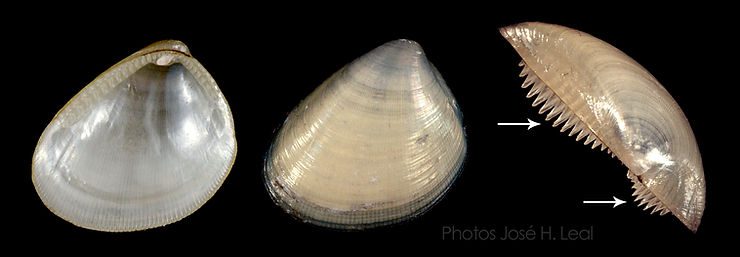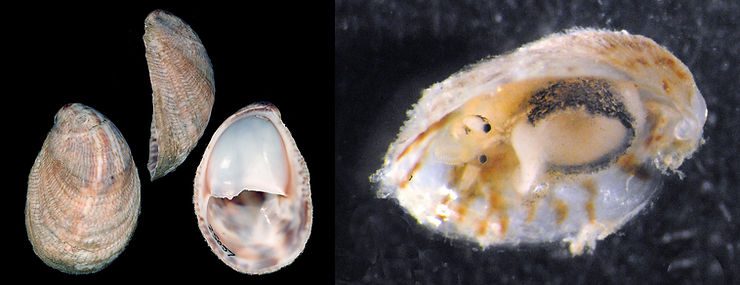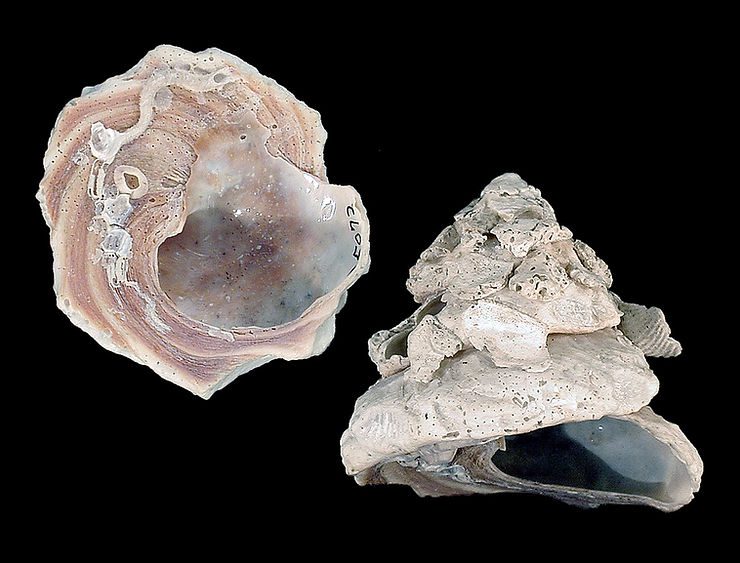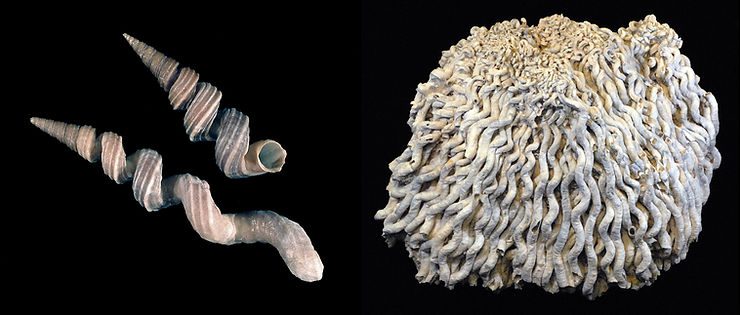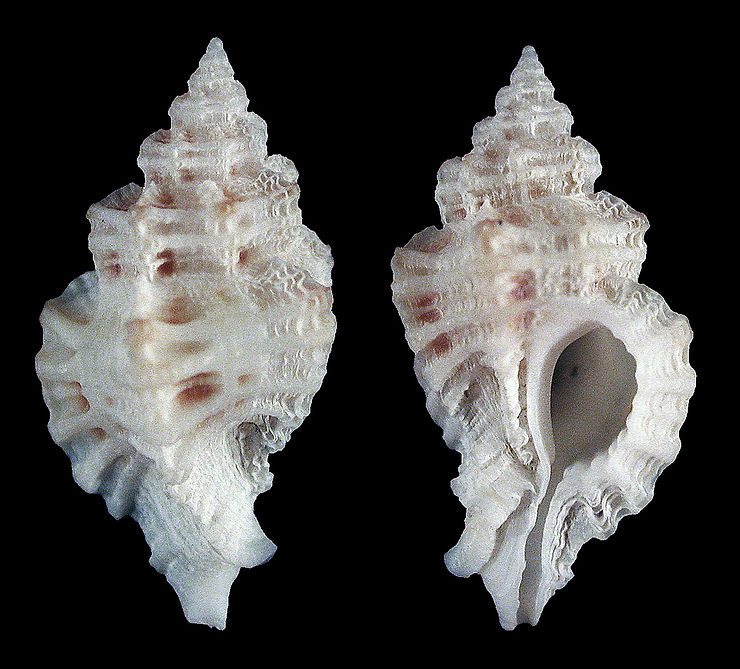
The Pitted Murex
The Pitted Murex, Favartia cellulosa (Conrad, 1846), is one of the less-known Murex drills in Southwest Florida. Its shell may be pure white or whitish with brown undertones. The Pitted Murex derives its name from its shell sculpture. The shell surface is sculpted with apparent small pits, which closer inspection reveals to consist of a lace-like, interwoven pattern. One of the features of the shell in this species is the presence of varices, the wing-like expansions that repeat themselves at re
